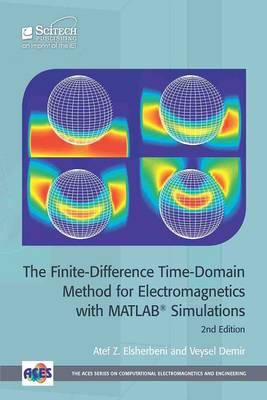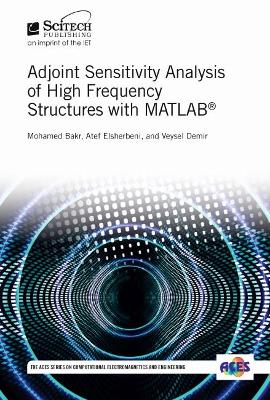Electromagnetic Waves
2 total works
The Finite-Difference Time-Domain Method for Electromagnetics with MATLAB (R) Simulations
by Atef Z. Elsherbeni and Veysel Demir
This book introduces the powerful Finite-Difference Time-Domain method to students and interested researchers and readers. An effective introduction is accomplished using a step-by-step process that builds competence and confidence in developing complete working codes for the design and analysis of various antennas and microwave devices. This book will serve graduate students, researchers, and those in industry and government who are using other electromagnetics tools and methods for the sake of performing independent numerical confirmation. No previous experience with finite-difference methods is assumed of readers.
Key features
- Presents the fundamental techniques of the FDTD method at a graduate level, taking readers from conceptual understanding to actual program development.
- Full derivations are provided for final equations.
- Includes 3D illustrations to aid in visualization of field components and fully functional MATLAB (R) code examples.
- Completely revised and updated for this second edition, including expansion into advanced techniques such as total field/scattered field formulation, dispersive material modeling, analysis of periodic structures, non-uniform grid, and graphics processing unit acceleration of finite-difference time-domain method.
Adjoint Sensitivity Analysis of High Frequency Structures with MATLAB (R)
by Mohamed Bakr, Atef Z. Elsherbeni, and Veysel Demir
This book presents the theory of adjoint sensitivity analysis for high frequency applications through time-domain electromagnetic simulations in MATLAB (R). This theory enables the efficient estimation of the sensitivities of an arbitrary response with respect to all parameters in the considered problem. These sensitivities are required in many applications including gradient-based optimization, surrogate-based modeling, statistical analysis, and yield analysis.
Using the popular FDTD method, the book shows how wideband sensitivities can be efficiently estimated for different types of materials and structures, and includes plenty of well explained MATLAB (R) examples to help readers absorb the content more easily and to make the theory more understandable to the broadest possible audience. Topics covered include a review of FDTD and an introduction to adjoint sensitivity analysis; the adjoint variable method for frequency-independent constitutive parameters; sensitivity analysis for frequency-dependent objective functions; transient adjoint sensitivity analysis; adjoint sensitivity analysis with dispersive materials; adjoint sensitivity analysis of anisotropic structures; nonlinear adjoint sensitivity analysis; second-order adjoint sensitivities; and advanced topics.

